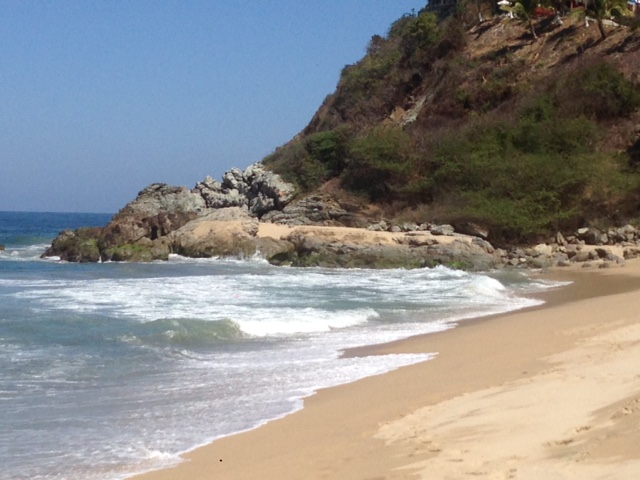
by PT-clc | Sep 6, 2018 | Benefits of being in nature, Creative Living, Dealing with Stress, Health & Wellbeing, High Achieving Women
How do you feel when you return home from a day or weekend of hiking, kayaking, camping, skiing, and being in nature? I feel relaxed, rejuvenated, an inner warmth; grateful for my body to have supported me to hike that challenging trail or to ski those moguls.
While in nature I am in awe of its beauty and at times the amazing stillness. I feel so relaxed and connected with what is around me.
There is more and more research about the benefits of being in nature and the negative impacts of not.
Richard Louv in his book “Last Child in the Woods: Saving Our Children from Nature-Deficit Disorder” (2005) coined the term Nature-Deficit Disorder. He has documented research on the negative impacts of children not spending time in nature including: attention difficulties, diminished use of the senses, obesity, and higher rates of emotional and physical illnesses. Research also suggests that the nature-deficit weakens children’s appreciation of and stewardship of the natural world.
“More recent research shows that the steady stress of urban living changes the brain in ways that can increase our odds of schizophrenia, anxiety and mood disorders [1].”
The positive impacts on health and well-being of spending time in nature have been well documented. Examples include the Japanese practice of “forest bathing” or “forest therapy”. Having set up forest bathing centers in a number of areas throughout Japan and conducting longitudinal studies for several decades, the Japanese have discovered that spending time among trees reduces your heart rate, reduces your blood pressure and increases the number of natural killer cells our bodies produce (i.e. strengthens our immune systems).
South Korea has implemented a National Forest Plan whose goal is “to realize a green welfare state, where the entire nation enjoys well-being”. They speak about “social forestry” and have initiated a number of programs and studies including: walking in hinoki forests, doing guided meditations, and special programs for everyone from cancer patients to prenatal groups, to children with allergies, to a forest healing program for fire fighters with PTSD.
I’m currently reading The Nature Fix by Florence Williams, a journalist who moved with her family from a quiet home in Colorado surrounded by nature to a noisy downtown Washington, DC home on a major flight path. She was so shaken by the negative impact of the move she decided to learn more about nature and its benefits. The book is a fun and interesting read as Florence flies to different countries, takes part in research, speaks to researchers and experiences first-hand a variety of “therapies”.
Given these powerful findings, how can you in your busy and sometimes stressful life incorporate more time in nature? Here are a few suggestions:
- Go for a walk in nature at least three times a week for 15 to 30 minutes ideally in a park where there are trees. You can do this at lunch time if you are close to a park.
- Join a hiking group and go hiking several times a month.
- Go camping with family, friends or a group.
- Find a special place close to where you live (if possible) where you can go that makes you feel relaxed. For me that is on some rocks by the ocean about 15 minutes walk from where I live.
- Take your kids to the park at the end of each work day. Spend 20 to 30 minutes “decompressing” and focusing on having fun and connecting with your children.
- Do mindfulness walking meditations[2] outdoors for 15 to 30 minutes three times a week.
- Do meditations that incorporate nature sounds once a day. I find Deepak and Oprah’s 21-day meditations (available from https://chopracentermeditation.com/) really helpful and do these every morning on awakening.
I’d love to hear how you feel when in nature and what strategies you’ve found helpful to increase your time in nature. Feel free to share this article with others.
[1] Williams, Florence, The Nature Fix – Why Nature Makes Us Happier, Healthier, and More Creative. New York: W.W. Norton, 2017.
[2] A mindfulness walking meditation enables you to get out of your head and into your body. When you walk outside in nature, slowly press one heal and the toes of one foot on the ground followed by the next, being totally present with your movements rather than thinking about all you have to do or reviewing a recent argument with your child or significant other. Focus on all of your senses. Notice the wind on your cheek, the sound of birds chirping, the smell of the salt sea air, see the beautiful vistas that surround you. Notice how you feel while doing the mindfulness walking meditations and after. Over time doing these walking meditations on a regular basis, notice what you notice.

by PT-clc | Mar 14, 2018 | Benefits of being in nature, Dealing with Stress, Self-Care
I just returned from three relaxing and fun weeks vacation in Mexico. We spent two of those weeks in a magical fishing village, which made me reflect on and appreciate the power of place.
Have you ever visited a place and felt like you were “home”? Whenever I enter this pueblo, any stress I have instantly drops away. I feel relaxed, playful, open to possibility, “in the flow”. There is also a special sense of community in this town where locals and foreigners live peacefully together.
Some years ago, a woman from California started a children’s art and music festival that is still held every year in March. Over time, though her hard work and dedication, she gathered human and material resources and now the festival has grown to include a bricks and mortar community center with a library, computer room, recycling depot, coffee shop and a small retail space. It is a place that offers courses for girls and boys, women and men on everything from entrepreneurship, to environmental education, to sustainable development, The center has a truly welcoming atmosphere and is aptly called Entre Amigos (among friends). People who visit from largely Canada and the US often volunteer time to contribute to projects and help with fundraising.
A sponsorship program has been developed whereby Canadians and Americans (many of whom live there 6 months a year) sponsor promising local Mexican high school students to attend college and university.
Last year we attended a fundraiser for the local hospital where many talented local children performed music, dancing, gymnastics … . It was an animated community event. Every year there is a well-organized music festival in the local plaza (square) with amazing performers from around Mexico and a few from other countries.
What keeps my partner and I coming back to this magical place? It’s a combination of the welcoming and supportive atmosphere, the natural beauty, the strong sense of community and the positive bonds and caring evident among the locals and those who visit for periods of time. It’s also a community where I feel I can contribute and make some sort of positive difference. Plus I get to speak Spanish, and for some reason I have a natural affinity for Latin culture.
I have also experienced the power of place closer to home. When I’m feeling stressed and want to ground and unwind, there is a place by the ocean about 10 minutes from our home that I walk to. When I lay on the rocks and feel the sun on my body, any tension drops away and is absorbed by the rocks. I feel so grateful to live so close to this place of natural beauty.
Have you experienced the power of place? I’d love to hear your experiences and see descriptions of your magical places. Feel free to share those below and to forward this post to others. I also encourage you if you haven’t already, to find a place close to where you live that you can go to relax, reconnect and let your stress melt away.

by PT-clc | Nov 1, 2017 | Change, Coping with Change, LeadinginUncertainTimes
In a previous post I outlined a proven process for embracing change while at the same time being a force for good in the world – https://pamela-thompson.com/strengthen-impact-world-dance-change/. In this article we will take a deep dive into the first step in this 5-step process: Shine the Light.
In step one of the Art of Change Framework we explore how you respond to change and why.
Reflecting on how you’ve responded to previous changes in your life will provide you with clues as to how you will respond to integrating new beliefs and behaviors into your life, and changing old beliefs, attitudes and behaviors.
A good place to start is to answer the question How do I typically respond to change on a scale from 1 to 10; 1 being “I thrive on it” and 10 being “It scares me to death”?
Another useful exercise is to reflect on past experiences with life changes and answer the question What have I learned that supports me to adapt and move forward when faced with change?
Barriers to Change/Moving Forward
A number of barriers to change have been identified in the literature including: becoming paralyzed by fear, procrastinating, blaming others, believing we can’t do something or are not worthy, always focusing on problems rather than solutions, getting stuck in old habits or denying change is happening, and not being willing to put in the effort required to make a change. It’s helpful to think about a change that has been recently imposed on you or was in the past. How do you feel about this change? What barriers do you have to embracing it? I invite you to take a few minutes to jot down your responses to these questions.
Overcoming Resistance to Change
M.J. Ryan in her book “Adaptability – How to Survive Change You Didn’t Ask for” (2009) notes that the ability to adapt is “the key indicator of success in these turbulent times. It’s the capacity to be flexible and resourceful in the face of ever-changing conditions.”
Aikido masters say that to be successful in life three types of mastery are needed: i) mastery with self; ii) mastery with others; and iii) mastery with change; meaning “the capacity to adapt easily without losing our center – our values, talents and sense of purpose” (Ryan, 2009). How can we learn to be change masters?
How can we learn to recover quickly from change and be adaptable so that when changes are “forced upon us” (e.g. a job loss) or we choose to make a change, we view it as an opportunity rather than a challenge?
There are a number of studies and tools in the literature that provide us with a better understanding of change and how to navigate it successfully.
Maddi and Kobassa (2005) in their book Resilience at Work: How to Succeed No Matter What Life Throws You analyzed data from 400 studies on organizational change and also conducted their own study of AT & T executives during reorganization. They found that those who thrived the most while undergoing organizational change displayed 3Cs: i) Challenge; ii) Control; and iii) Commitment. Challenge – meaning they saw change as an opportunity to learn and grow and were optimistic about the future. Control – meaning they believed that they had choices and could influence their lives and events around them. Rather than worrying about things they could not control, they focused on identifying what they could control and took action on those things. Commitment – meaning they lived their lives passionately and stayed connected to people even when times got tough.
Tips for Overcoming Resistance to Change and Moving Forward
- Change your perspective – View change as an opportunity for self-growth and learning; an opportunity to explore new solutions and ways of doing things; to put on a new “pair of glasses” and see the world differently.
- Slow down and go inside yourself – create some time and space for yourself rather than keeping yourself busy. Set aside time in your schedule for you. Spend at least 30 minutes a day meditating, journaling, walking in nature.
- Get in touch with and acknowledge your feelings rather that pushing them down and not experiencing them; this is important to begin the process of healing from the inside out.
- Express those feelings through drawing, journaling, painting, dancing, etc.
- Express Gratitude regularly – Create a gratitude journal or write down at least 5 things you are grateful for each morning or evening. Research shows that people who express appreciation and gratitude on a regular basis are more optimistic and lead happier lives.
- Believe in Yourself – think of all the positive things you’ve done and accomplished in the past. Recall a particular time you felt really proud of what you’d done and reconnect with the positive feelings you felt at that time.
- Nurture and Take Care of Yourself – make sure you are eating well, getting enough sleep, exercising regularly; do something special for yourself such as going for a massage, having a bubble bath, buying a new outfit.
- Reach out for support – to a friend, coach or counsellor; surround yourself with people who believe in you and are not judgmental.
- Identify the things you can control when you’re going through change such as your thoughts, stories, and language. (from Ariane de Bonvoisin, The First 30 days)
Parting Thoughts
The more you understand change and the more self-aware you are about how and why you respond to it, the more easily you can embrace and move through it. This has a huge positive impact on both your personal and professional life and your ability to positively influence others.
I invite you to share your thoughts and perspectives below on any part of this article. Feel free to share it with others.

by PT-clc | Oct 3, 2017 | Change, Coping with Change, Creative Living, Health & Wellbeing
We are hard-wired to perceive change as a threat. Our primitive brain likes to keep us safe and has enabled humans to survive through time. When our amygdala (part of the brain) detects fear, it sends messages to our bodies to go into fight, flight or freeze mode. This explains why some of us become angry as a result of a change being imposed on us, fearful and wanting to run away from a situation rather than face it, or paralyzed and unable to think clearly or to move forward.
So, how can we reduce our fear of change given this biological reality? Norman Doidge in The Brain that Changes Itself provides powerful evidence that our thoughts and perceptions have the power to change the structure of our brains. In other words, if we create new beliefs around change and internalize them, we also create new neural pathways that enable us to respond positively to change rather than view it as a threat. Candace Pert in her landmark book Molecules of Emotion provides strong evidence that our thoughts and emotions affect our bodies.
Given these facts, how can we reduce our fear of change? Here are some proven strategies. We can:
- Understand how we respond to change and why – A simple exercise is to rate yourself on a scale from 1 to 10 related to how you respond to change: “1” being it scares me to death and “10” being I thrive on it. Another way is to spend some time reflecting on the barriers you have towards change and writing them down. A number of barriers to change have been identified in the literature including: becoming paralyzed by fear, procrastinating, blaming others, believing we can’t do something or are not worthy, always focusing on problems rather than solutions, getting stuck in old habits or denying change is happening, and not being willing to put in the effort required to make a change. Ask yourself, What barriers do I have to embracing change in general, and in this particular situation? E.g. changing jobs, leaving an unsatisfying relationship, accepting a new leader in my organization. Notice past patterns in your life.
- Become aware of our beliefs around change – Close your eyes and think about a recent change; one that you didn’t choose but was imposed on you. Examples include: lay-off, separation, relocation. Notice what words come up for you. Write them down. Begin with the stem “Change is”_______ and fill in the blank. Do a brain dump and write down all the words that come up to define what change means to you. Examples are “Change is scary”; “Change is to be avoided at all costs” …
- Try on some new beliefs about change; such as “Change opens me up to new possibilities”, “Embracing change is a creative process”, “Change provides me with an opportunity to learn and grow”. Post one of these positive beliefs where you will see it at least 3 times a day – on your computer, bathroom mirror…and say this belief aloud each time you see it. Do this for 21 to 30 days and observe what you notice.
- Become aware of how we perceive change and replace our negative feelings and emotions with positive and empowering ones. Ariane de Bonvoisin in “The First 30 Days – Your Guide to Making Any Change Easier” identifies six “change demons” and their antidotes. The six change demons are: fear, doubt, blame, guilt, shame and impatience. She explains that the change demons “help us navigate through change by alerting us if we are off course and encouraging us to choose a different emotion to help us get where we want to go.” Being aware of which emotion you are feeling and replacing each one with positive and empowering emotions and antidotes are key to learning from and navigating change and dealing with uncertainty. The six change demons and their antidotes are:
| Change Demon |
Antidote |
| 1) fear |
faith |
| 2) doubt |
surrender (to not knowing) |
| 3) blame |
honesty (taking responsibility for our role in situations) |
| 4) guilt |
forgiveness |
| 5) shame |
honor (your dark or shadow side) |
| 6) impatience |
endurance |
- Introduce small changes into your daily routine. Take a different route to work. Eat something different for breakfast. Walk or cycle to work instead of driving. Do this for a month and observe what you notice. Change is like a muscle. The more change you choose in your life, the more flexible you tend to become.
What change demons are your facing? How do you typically respond to change? What strategies will you begin integrating into your life to reduce your fear of change?
I welcome your comments below. Feel free to share this post with others.

by pam | Mar 28, 2017 | Benefits of being in nature, Body-centered coaching, High Achieving Women, Self-Care, Stress Management
Oh, how I love spring! Here on the west coast, the daffodils and crocus have been out for several weeks, and the cherry blossoms and rhododendrons are starting to show their beauty. Many of us in spring get “spring fever” or a burst of energy; particularly if we’ve endured a long, cold winter. This time of year, I have to remind myself that I’m not 25 anymore and avoid taking on too many new obligations and activities even though I feel so alive! Perhaps you relate. Do you often take on alot of activities and obligations, and say “yes” because you’ve been asked and you think you should? I’ve been there and know what it feels like to lose your energy and not feel like doing much of anything. So how can you prevent yourself from taking on too much and then crashing?
Here are a few tips:
- Spend time in nature several times a week or more. Go for a walk, a hike, visit a garden, use all of your senses to take in the natural beauty. Bathe in forests. The Japanese have done longitudinal research to show that when we walk in forests, it reduces our heartrate, reduces our blood pressure and increases the number of natural killer cells our body produces (strengthens our immune system).
- Be aware of your energy and the people who “give” and “take” energy from you. Get clear on the people in your life who energize you and those who tend to sap your energy. Spend most of your time with those who energize you.
- Set healthy boundaries. Write a list of the things you enjoy doing. When people ask you to chair a committee or serve on the Executive of a group, be clear that this is what you enjoy doing rather than what you feel you SHOULD do. Living life following the “shoulds” is energy-draining and doesn’t bring out our “best sides”. For more strategies visit http://creativelivingcommunity.com/are-you-giving-too-much-2/
- Practice saying “no”. You may have been raised in a family where children and women were expected to do what they were asked and experienced the repercussions of NOT following the rules. … Start small. It’s like a muscle; the more you say “no”, the easier it becomes.
- Listen to and Trust in Your Body’s Wisdom. Our bodies always know the truth. There are a number of decision-making tools that enable us to get “out of our heads” and our logical left-brains, and tap into our bodies. Muscle testing is one way to determine whether we should say “yes” or “no”. One way to do this is to stand up straight, feel like you have a plumb line going from the top of your head to the tips of your toes. Then ask yourself the following: Is my name …? And state your real name. Your body should sway forward meaning “yes”. Then say to yourself Is my name John Doe? If that is not your name, your body should sway backwards. Now you have a baseline. Now ask yourself other questions such as Should I accept the position as President of this Club/organization?. When your body moves backwards it indicates “no”, forwards “yes”, and if it doesn’t move ask again. It may be that this decision won’t have strong impact on you either way. For additional examples see http://creativelivingcommunity.com/how-do-you-make-decisions/ .
I’d love to hear from you and invite you to try any or all of the strategies above and notice how they work for you.
Please share below strategies that you’ve found helpful in preventing you from taking on too much and then crashing.
Here’s to your health, happiness, fulfillment and inner peace!




